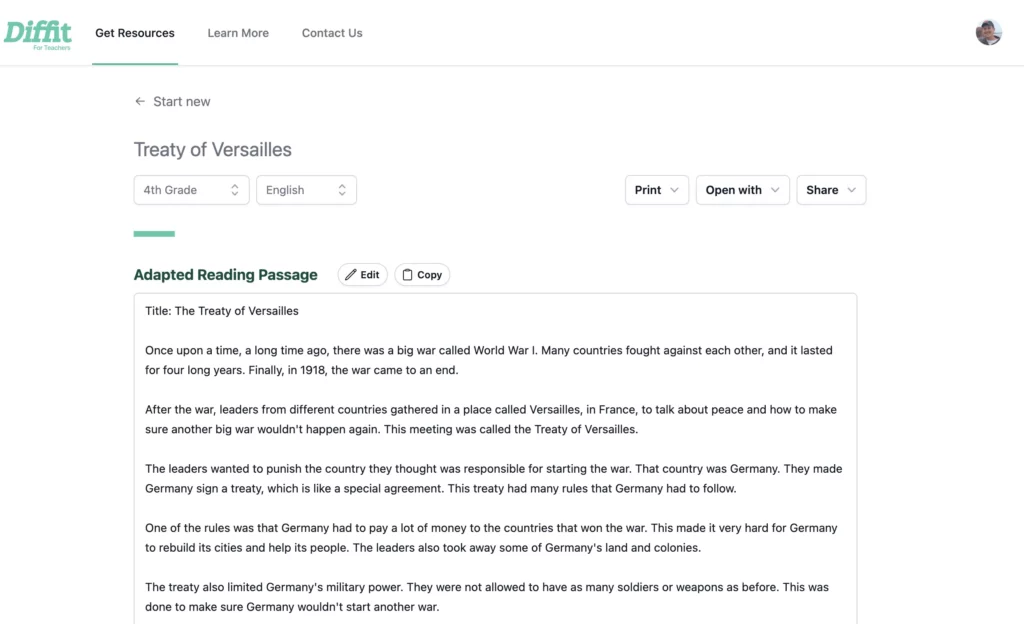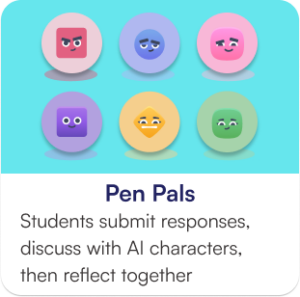At Short Answer, we’re hard at work thinking through how we can meaningfully incorporate AI into our learning experience. We’ve got some exciting new AI features in the works that we’re excited to share soon. There is no doubt that AI will fundamentally change the way formative assessment takes place in the classroom and we couldn’t be more excited to facilitate that change. In the meantime, we’re closely monitoring other amazing new learning tools using AI to improve pedagogy in K12 classrooms. One amazing tool that recently caught our eye is Diffit.

Diffit is a new AI tool designed to help teachers in delivering leveled resources for any lesson. Think Newsela, but AI-powered. Simply type in the topic, term, or question you want to focus on, select the age level of your students, and click “Generate Resources.” In seconds, Diffit kicks out a leveled reading passage along with key vocabulary, multiple-choice questions, and open-ended prompts based on the passage. The open-ended prompts seem particularly powerful in their ability to get students thinking deeply about the material and would be incredibly powerful when paired with the gamified peer feedback activities in Short Answer.
Diffit has so much potential as an incredibly powerful, simple way to differentiate instruction for students at different reading levels in your classroom without the high cost of many of the existing tools that conduct similar services (at least for now). Creating varied resources for each student’s level has always been a mammoth task for teachers, taking away valuable time from actual instruction and interaction. Diffit addresses this challenge head-on by using AI to level educational resources instantaneously, enabling teachers to provide every student with content that suits their individual learning needs. It’s a great example of how AI can be used to augment high-quality pedagogy in K12 classrooms. It’s definitely a tool to keep an eye on moving forward.







